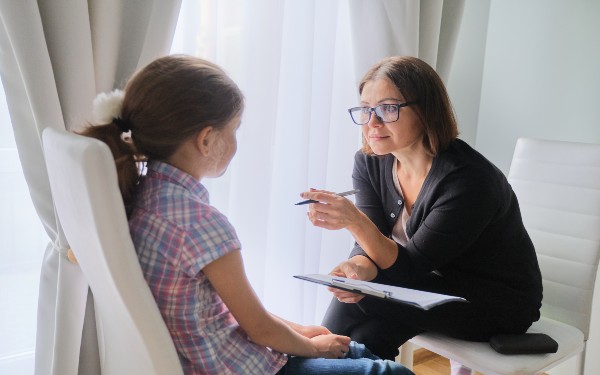
Inspectors are to probe how agencies respond to child victims of domestic abuse.
The latest round of joint targeted area inspections (JTAIs) will, in particular, look at how councils, relevant health bodies, the police and probation protect and promote the welfare of unborn children and those aged 0-7.
Inspectors will evaluate the multi-agency arrangements for responding to child victims at the point of their identification, assessment, planning and decision-making in response to referrals, protect, supporting and caring for child victims or those at risk and preventing children from becoming victims.
Ofsted, the Care Quality Commission, His Majesty’s Inspectorate of Constabulary and Fire & Rescue Services (HMICFRS) and His Majesty’s Inspectorate of Probation (HMI) Probation will begin the programme of inspections this month.
What inspectors found previously on domestic abuse
The inspectorates carried out a JTAI programme on the response to children living with domestic abuse in 2016. This found that:
- Too little was being done to prevent domestic abuse and repair the damage that it does.
- Work with families was often in reaction to individual crises rather than preventive.
- Agencies did not always focus enough on the perpetrator of the abuse.
- There was not a clear and consistent understanding about what information professionals can share within agencies and across agencies.
Since then, the Domestic Abuse Act 2021 has made clear that children are victims of domestic abuse in their own right if they have seen, heard or experienced abuse perpetrated against a parent or relative.
‘Emphasis on physical violence as abuse indicator’
The same report identified an “overly simplistic and optimistic” approach to domestic abuse and its impact on children, with an overemphasis on physical violence as the primary indicator of abuse and as a means of assessing the risk posed by the abuser.
Non-physical incidents were seen as “low-level” and so were not responded to appropriately and often conflated with “parental conflict”.
More recently, a BBC report revealed that more than a third of social work courses lacked specific training on coercive and controlling behaviour, prompting university social work leaders to say that it was not in their remit to train students in specialist areas of practice.
‘Over-reliance on individual casework’
In response to that debate, academics Brid Featherstone and Kate Morris shared findings from research into domestic abuse and child protection.
They found “despite sterling attempts by amazing practitioners and managers, they were often trapped within approaches that relied on individual casework and risk management,” which “translated into the outsourcing of safety and protection responsibilities to those most vulnerable and least able to respond (often impoverished mothers)”.
The JTAI will draw on evidence including practice observations, an audit of six children’s cases in each area, sampling of a wider group of children’s experiences, analysis of performance data, interviews with practitioners, managers and leaders and the views of children and families.
What agencies will be judged on
Evaluation criteria include:
- Practitioners and support staff see the impact of domestic abuse through the eyes of the child, respond to children as victims of domestic abuse in their own right, are well trained, confident, and knowledgeable and demonstrate professional curiosity, enabling them to identify how to help and protect children and to take action to do so.
- Children’s welfare is promoted and protected through effective and timely responses to adult victims of domestic abuse. Practitioners recognise that abuse does not necessarily end when the relationship ends, and may in fact escalate, and they take steps to reduce the risks.
- Assessments of children and ongoing plans include contributions from all agencies. They are timely and dynamic, and consider strengths within the family as well as risks.
- Risk of harm to children is reduced through the identification and assessment of adults who pose a risk of domestic abuse. These adults are held to account through appropriate and targeted interventions by all practitioners.
- Children and their families are listened to. Multi-agency practice focuses on children’s needs and experiences and is influenced by their wishes and feelings. Practitioners identify and respond to the needs of children who may be unable to share their views, including unborn children.
- Leaders ensure that practitioners’ training, learning and supervision enable them to identify and respond effectively to children who are victims of domestic abuse. This includes single- and multi-agency training that ensures children receive an effective multi-agency response.
‘Time to revisit this important issue’
Ofsted’s national director for social care, Yvette Stanley, said that, since the last JTAI on domestic abuse, “positive steps have been taken to recognise and tackle the impact domestic abuse can have on children”.
She added: “The time is right to revisit this important area and look at what is happening now to prevent abuse and to promote and protect children’s welfare.






 Bournemouth, Christchurch and Poole
Bournemouth, Christchurch and Poole  Hampshire County Council
Hampshire County Council  Lincolnshire County Council
Lincolnshire County Council  Norfolk County Council
Norfolk County Council  Northamptonshire Children’s Trust
Northamptonshire Children’s Trust  South Gloucestershire Council
South Gloucestershire Council  Wiltshire Council
Wiltshire Council  Wokingham Borough Council
Wokingham Borough Council  Children and young people with SEND are ‘valued and prioritised’ in Wiltshire, find inspectors
Children and young people with SEND are ‘valued and prioritised’ in Wiltshire, find inspectors  How specialist refugee teams benefit young people and social workers
How specialist refugee teams benefit young people and social workers  Podcast: returning to social work after becoming a first-time parent
Podcast: returning to social work after becoming a first-time parent  Podcast: would you work for an inadequate-rated service?
Podcast: would you work for an inadequate-rated service?  Family help: one local authority’s experience of the model
Family help: one local authority’s experience of the model  Workforce Insights – showcasing a selection of the sector’s top recruiters
Workforce Insights – showcasing a selection of the sector’s top recruiters 

 Facebook
Facebook X
X LinkedIn
LinkedIn Instagram
Instagram
Social workers will have two to three case’s which involve domestic abuse be that physical, verbal,emotional,financial and coercive control,each of which bring with it consequences for the abused and the child at what ever age,the younger the child the greater the risk because the can not tell you what is happening.In saying that some will tell you by giving clues,this may be speaking in the third person.
Some are found accommodation and sorry to say forgotten about and considered at lower risk,therefore little intervention takes place.( we know this does not solve the issue’s).Those children who remain in the home are at risk and is worrying for the social worker,because we expect the abused parent to protect the children if they do not we ask why not.
Domestic abuse is complex and hidden, social work is now target lead whereby the focus is on meeting timescales and not actual social work.You are left with the sense of not being in a position to dig deeper.
A child or abused parent is not going to be open and honest about what is taking place in the home.The abused parent may have been witnessed to abuse in the home enviroment since childhood therefore this is not new behaviour the parent who is now the support system for abused parent may have been the abusive parent.My point is there are many different examples which require establishing a connection that takes time for the parent/child and can be painful/difficuilt for the parent.They may not be aware of the clues thier child is telling them about the effects on thier mental well-being.
When you make contact to carryout your assessment there are different challenges at play being aware of the signs is important is it not.
I find it difficult understand why it is even questioned whether this should be a part of social work training especially when this is a large part of social work assessments for the courts,risk assessments and or parenting assessments.
Assessments are important documents.Assessing someone over the phone to meet timescales and save time is not an assessment in my view at any time especially during child protection case’s.You do not get a sense of the enviroment in which the child lives,you miss none verbal clues,the parent who claimes the other parent is turning the child against them( parental alienation)or (manipulation) is this because the child is subconsciously protecting the other parent? Therefore have they witnessed abusive behaviour?
These are my views,experience,observation has a child protection social worker for over 43 years.In my view it is an area which needs more resources,research and social work training with social workers having the time to plan effective interventions which will provide meaningful information/assessments inorder to safe guard children.
There are largely committed and hard working social workers and managers who are committed, however are unable to provide what should be a professional service.
There are those who are not I speak from experience.
Is this not what we trained to do.Being open and honest in my view is about giving the child the best outcome!!
It’s probably better to start from the position of surviance rather than victim; the neuroscience of which is better suited, no?
If I understand what you are saying Alec systems and attitudes do not allow for open honest feedback, or points of view to do so leaves you being shut down and told “I am speaking ” in front of a room full of social workers when you attempt to give your point of view.
Perhaps I misunderstood the venue to be a place for learning,sharing information and views how wrong I was.
These are my experiences